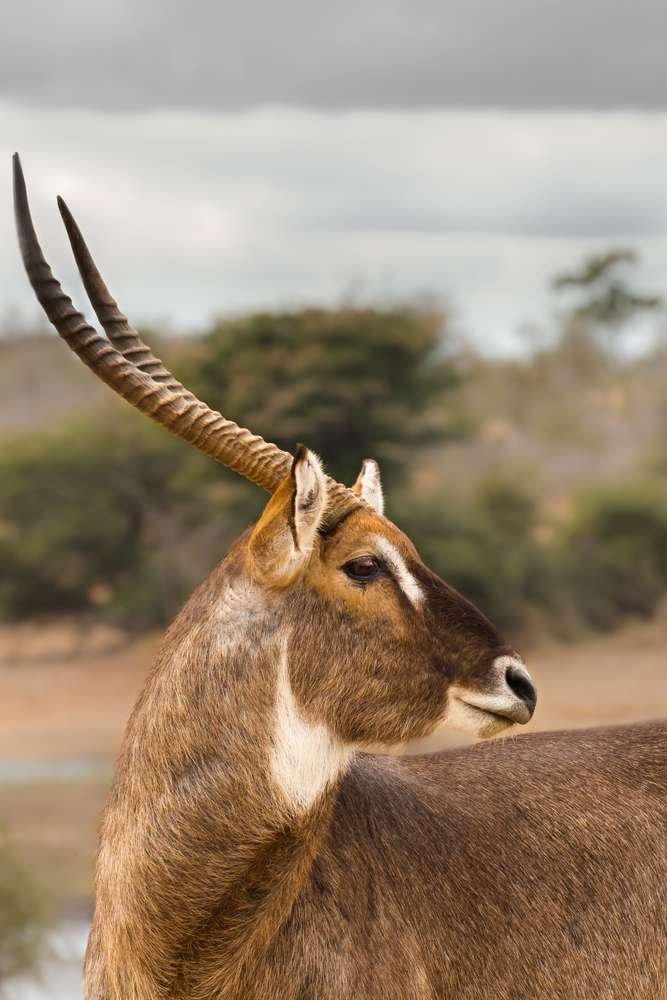Ellipsen Waterbuck
( common waterbuck or ringed waterbuck )
- Kobus ellipsiprymnus ellipsiprymnus
- IUCN Status: Least Concern
- Trend: decreasing

- Kingdom: Animalia
- Phylum: Chordata
- Class: Mammalia
- Order: Artiodactyla
- Family: Bovidae
- Genus: Kobus
Share:
General Information
The ellipsen waterbuck is one of two waterbuck found in Zambia, the Ellipsen waterbuck and the Defassa waterbuck. The main difference being that the Ellipsen waterbuckt stands taller, has a shorter tail and has a white hollow ring of hair around its rump than the defassa waterbuck which has a white lump on its rump.
Fun Facts!
Description
- Shoulder height: 127 cm
- Length: 177 and 235 cm
- Weight: 161 – 262 kg
Ecology and Behaviour
The waterbuck cannot tolerate dehydration in hot weather, and thus inhabits areas close to sources of water. Predominantly a grazer, the waterbuck is mostly found moving in fairly big herds near dambos and on aquatic grassland but always close to woodland or thicket. In equatorial regions, breeding takes place throughout the year, but births are at their peak in the rainy season. Hyenas, lions, and leopards are the major predators, but crocodiles, hunting dogs and cheetahs also take waterbuck.
Conservation
The International Union for the Conservation of Nature and Natural Resources (IUCN) lists the waterbuck as of least concern (LC).
Distribution and Habitat
Found in east of the Rift Valley, in the middle Zambezi and Luangwa valleys in Zambia. They are also found in Ethiopia(Webi Shebeli river valley), Botswana, Namibia(east of the Kwando River in the Caprivi Strip) , Somalia(Juba and Webi Shebeli river valleys), Kenya(east of the Rift Valley) , Tanzania(east of the Rift Valley) , Zimbabwe, Malawi, Mozambique and South Africa (eastern and northern Transvaal).
The Ellipsen’s distribution slightly overlaps that of the typical defassa and that of the Crawshay defassa in the Rift Valley in Zambia.
Interaction with humans
Large populations being eliminated from their habitats due to poaching and human settlement. Scientists with the ICIPE have developed tsetse-fly-repellant collars for cattle based on the smell of the waterbuck which is so unpleasant that it repels predators and assists in water-proofing the body when the animal dives into water.
No donation to this project yet.
| M | T | W | T | F | S | S |
|---|---|---|---|---|---|---|
| 1 | 2 | 3 | 4 | 5 | 6 | 7 |
| 8 | 9 | 10 | 11 | 12 | 13 | 14 |
| 15 | 16 | 17 | 18 | 19 | 20 | 21 |
| 22 | 23 | 24 | 25 | 26 | 27 | 28 |
| 29 | 30 | 31 | ||||


